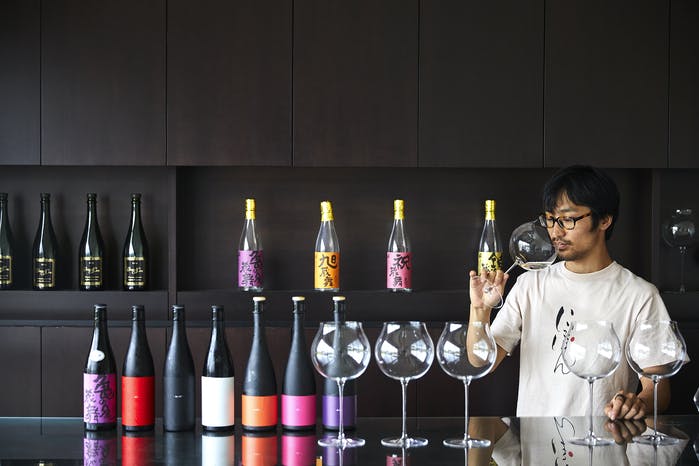
If sake from Japan is stirring growing interest among food lovers and enthusiasts of wine and spirits, this drink is still relatively unknown outside Japan. Here are some essential steps to tasting sake in accordance with tradition.
A Ritual in Its Own Right
As with any fine wine or spirit, sake tasting relies on several factors: the choice of glass, serving temperature, environment, and also the focus of the taster. The aim is to reveal the aromatic palette and the texture of sake at their best.
Which Glass to Use for Sake Tasting?
Traditionally served in ochoko (small ceramic cups) or sakazuki (flat saucers), sake can also reveal its full complexity in a white wine glass or a copita, which help to better concentrate its aromas.
For so-called “modern” sakes, characterised by fresh, fruity and floral profiles, usually made from highly polished rice (ginjo, daiginjo), a white wine glass or copita is preferred.
More “traditional” sakes, such as junmai or honjozo, with a richer, grainier or umami style, are better enjoyed in typically Japanese glasses such as ochoko (small thick cups) or sakazuki (flat saucers).
Serving Temperature, a Decisive Factor
Contrary to popular belief, sake is not only tasted warm. Temperature directly affects the aromatic profile and texture. It should be chosen depending on the style:
- Chilled (5–15 °C): Ideal for modern sakes with delicate and fruity aromas. The chilled temperature brings out their finesse.
- Room temperature (15–20 °C): Ideal for traditional sakes, providing a good balance between structure and complexity.
- Warm (40–55 °C): Reserved for richer and rustic sakes, to reveal their roundness and smoothness on the palate.

Tasting Sake in 4 Key Steps
Step 1: The Eye
Observe the appearance: clear for most sakes, sometimes cloudy (nigori), or amber (koshu) for aged sakes.
Step 2: The Nose
Inhale gently. Aromatic profiles may be fruity (melon, apple, banana), floral (lily, honeysuckle), but also grainy (cooked rice, rice cream), lactic, or spicy.
Step 3: The Palate
Savour a sip, letting it envelop the entire palate. Appreciate the texture—fluid, rich, silky—then analyse the balance between sweetness, umami, acidity, and bitterness, as well as the structure.
Step 4: The Finish
Enjoy the aromatic persistence. The finish varies by style: short and delicate, long and lingering, or with umami notes. Retronasal perception can bring out subtler secondary aromas.
GO FURTHER IN DISCOVERING SAKE
La Maison du Whisky has three shops in Paris:
The shop on rue Tiquetonne specialises in sakes and can introduce you to a wide variety of this spirit.
Follow our tasting calendar for upcoming tastings, or visit the Golden Promise Whisky Bar which offers a wide range of cocktails as well as whisky, rum and other spirits by the glass.
You can also discover more articles about sake.